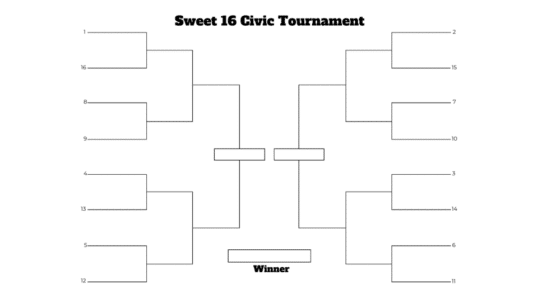Over the last several weeks I’ve been describing the Interactivity Foundation’s approach to discussions in terms of three interactive stages. In previous entries I covered stage one (developing questions to describe the area of concern) and stage two (developing policy possibilities that respond to those questions). In this entry I’ll focus on the third and last stage, consolidating and revising those possibilities by exploring some of their potential real-world implications.
Exploring Consequences from Diverse Perspectives
When you’re generating possibilities, it’s important not to evaluate them as you do so. It’s vital that you simply get these ideas out. You need to develop them without worrying about whether they are feasible or too unconventional ever to be widely accepted. Once you’ve fleshed out a set of at least four different possibilities, four contrasting approaches that society might take to address the area of concern, then it’s time to start thinking about what these possibilities would be like in the real world. It’s time to imagine how they might actually unfold and what real-world implications they might have.
When you’re discussing potential consequences, you really have to try to imagine what the world would be like if a given policy possibility was in effect. Imagine that you live in a world where this is how society responds to this or that concern. It’s important to keep in mind that consequences often unfold in unforeseen and unintended ways. There are differences between short-term and long-term consequences. Since dramatic short-term effects can often turn people off from a given possibility, this is a good chance to think ahead about whether those effects could change in the long-term.
For example, in the discussions of human genetic technologies one possibility focused providing universal access to human genetic technologies that could benefit health without regard to an individual’s ability to pay. The initial consequences discussed by the panelists focused on how this would dramatically add to the cost of our already too-expensive healthcare system. Some felt like this showed that the idea was unfeasible and should just be dropped. But as the discussion moved along, people talked about how most health-related genetic services would focus on disease prevention, which meant that over the long-term the cost of such a system should be lower than a system based on disease treatment.
Of course, whether potential consequences are seen as a “harm” or a “benefit” depends on the perspectives of the diverse groups or populations in a society. So you’ll have to expand your thinking to imagine what some of these different perspectives could be. You’ll have to challenge yourself to adopt some of these diverse perspectives. You’ll find that you’ll be able to see different consequences–or you’ll find that the same consequence might be regarded in divergent ways–depending on the different points of view you take up. You’ll likely discover different kinds of consequences as well. You might explore the impact on the economy or on the actions of different relevant players (like the genetic technology service providers or patients needing such services), and you might explore broader cultural or moral effects (e.g. “if this policy were in effect, we’d be a more callous society” or “we’d be a more caring and egalitarian society”).
The exploration of potential consequences can give you a better sense of what the policy possibilities really mean. It can also help you to discover connections between some of the possibilities (if some possibilities have very similar consequences, that might be a clue that there’s a way to combine them). You undoubtedly will discover some consequences that you’d rather avoid; which will set you wondering about whether there’s something you could change in the possibility itself to lessen or avoid those consequences.
Revising, Consolidating, and Deleting Possibilities
The exploration of consequences really helps the task of making changes to the possibilities you developed. You’ll have a more real sense of what each possibility means, and likely a good sense of some things you’ll want to fix in the description of each one–either to make the possibility clearer or to avoid some negative consequences you discovered. You’ll probably see some connections amongst some of the possibilities, which could help you find ways to combine them into a consolidated possibility. And you may find some possibility that is just not worth keeping.
This is a time for making some selections , consolidations, and exclusions among the possibilities. You might enter this stage with a large number of possibilities (maybe eight or ten) and end up with a robust group of five or six. Our ultimate goal is to come out of the discussions with a set of contrasting possibilities that will stimulate reflective discussions among our fellow citizens. We have to be careful to focus on that goal in this stage of selection and exclusion. We don’t exclude possibilities just because we don’t personally like them or we don’t think others will accept them. We might exclude a possibility if it seems like it won’t really foster thoughtful discussions, or if it seems incoherent or like its negative consequences would keep it from attaining its policy goals (things that might come up in the discussion of consequences).
When you revise possibilities, you might look back at their imagined consequences and ask yourself, “is this a bug or is this a feature?” A bug is unintended, a glitch, reaveled by negative effects. A feature may also entail bad effects–but it is inherent in what the policy possibility is all about. When you revise, you can try to fix the bugs–but changing the features really means altering the basic idea of the possibility you’ve designed. For example, the genetic technology discussions led to the idea of taking an unrestricted free-market approach, where people could buy whatever genetic interventions they could afford. Later some panelists wanted to add in some governmental protections for consumers to avoid some of the consumer abuses that might come up. But they eventually realized that this would really mean changing a fundamental feature of the possibility. They decided that it was more in the spirit of this policy approach to leave it up to consumers as free individuals to take whatever action they could muster on their own.
This is a time for a sort of final review of the possibilities you’ve developed–not just as individuals but as a whole group. When you look back at the big questions you raised in the first stage of the discussion process, and when you look at the whole set of possibilities you’ve developed, you might wonder whether there are any obvious gaps. You might ask how your possibilities respond to the questions raised early on–and whether there are any new possibilities that come to mind. In our approach to discussions, we’ve found that there is almost always time for late entries. Whether within the course of a single discussion session or over the course of a whole discussion project, there is often a time when the conversation lags and it seems like everything has been said–and then a new insight will emerge. Often those late insights are quite powerful ones.
This period of review and revision should help you clarify your descriptions of the different possibilities. You can clarify how the possibilities respond to some of the questions raised early on in the project. You can clarify the thinking and beliefs that animate them. You can be mindful of how they might lead to different kinds of effects in a diverse and complex society. Above all you’ll want to think about how your description of these possibilities might help others to engage and expand their own imaginative thinking about what could be.
–Jeff Prudhomme



